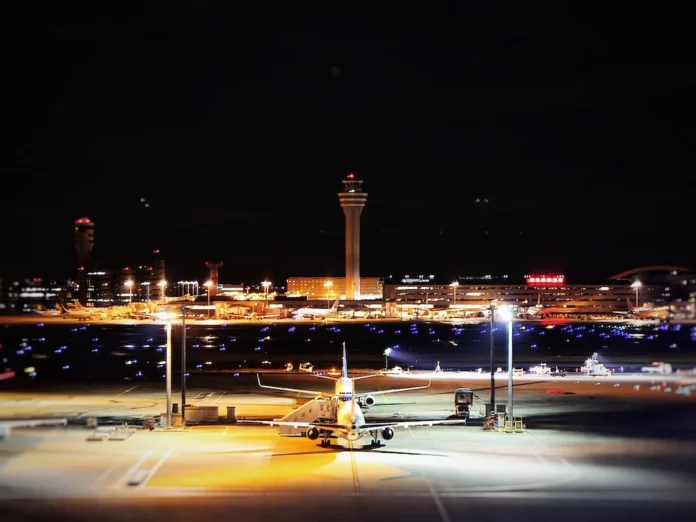Terminal Instrument Procedures (TERPS) is a set of rules and standards established by the Federal Aviation Administration (FAA) to ensure the safe and efficient operation of aircraft in instrument meteorological conditions (IMC). TERPS provides detailed guidance on the design and evaluation of instrument approach procedures, departure procedures, and arrival procedures at airports across the United States.
TERPS plays a crucial role in ensuring the safety of aircraft operations in low visibility conditions, such as fog, rain, or low clouds. These procedures are essential for pilots to navigate and land their aircraft without visual references to the ground or surrounding terrain. By adhering to TERPS, pilots can rely on navigational aids and instruments to safely fly their aircraft to and from airports.
Contents
Understanding Terminal Instrument Procedures
Terminal Instrument Procedures comprise three main components: instrument approach procedures, departure procedures, and arrival procedures.
Instrument Approach Procedures
Instrument approach procedures, also known as instrument approaches, guide pilots during the final phase of their flight, leading them from the en route phase to the runway for a safe landing. These procedures provide a step-by-step sequence of altitude, heading, and speed instructions that pilots must follow to transition from instrument meteorological conditions (IMC) to visual meteorological conditions (VMC) for landing.
There are different types of instrument approaches, including precision approaches and non-precision approaches. Precision approaches, such as Instrument Landing System (ILS) approaches, provide more precise lateral and vertical guidance to the runway, making them suitable for low-visibility conditions. Non-precision approaches, such as Localizer (LOC) approaches and VHF Omnidirectional Range (VOR) approaches, offer less precise guidance and are typically used in better weather conditions.
Instrument approach procedures consist of instrument approach charts, which depict the necessary headings, altitudes, and distances pilots need to follow to arrive at the runway safely. These charts are crucial references for pilots during instrument approaches and help them maintain situational awareness throughout the procedure.
Departure Procedures
Departure procedures, commonly referred to as departure operations or DPs, are designed to facilitate the safe and efficient exit of aircraft from an airport or airspace. These procedures provide pilots with specific instructions and routing to follow after takeoff, enabling them to transition smoothly from the initial climb phase to the en route phase of flight.
Departure procedures help aircraft avoid obstacles and conflicting traffic, ensuring separation between aircraft departing from the same or nearby airports. They also help minimize noise impact on local communities by providing standardized routes for aircraft to follow.
Similar to instrument approach procedures, departure procedures have associated charts known as Standard Instrument Departure (SID) charts. These charts depict the necessary headings, altitudes, and waypoints pilots should adhere to during the departure phase. By following the SID, pilots can safely navigate their aircraft away from the airport environment and proceed to their desired destinations.
Arrival Procedures
Arrival procedures, also known as arrival operations or STARs (Standard Terminal Arrival Routes), guide pilots from the en route phase to the terminal area of an airport, where they transition from the high-altitude en route phase to the instrument approach phase. These procedures ensure a safe and orderly flow of arriving aircraft into the terminal area and enable air traffic controllers to efficiently manage air traffic.
Arrival procedures consist of predefined routes and altitudes that pilots must follow to ensure proper spacing and separation between aircraft. These procedures help reduce complexity in air traffic management, improve safety, and facilitate a smooth transition from en route to approach operations.
Similar to instrument approach and departure procedures, arrival procedures have associated charts known as Standard Terminal Arrival (STAR) charts. These charts provide pilots with the necessary information regarding navigation, altitude restrictions, and waypoints to follow during the descent and approach phases of flight.
Benefits of Terminal Instrument Procedures
The implementation of Terminal Instrument Procedures offers several key benefits in aviation:
- Enhanced Safety: TERPS ensures aircraft can safely operate in low visibility conditions, minimizing the risk of accidents or incidents.
- Standardization: TERPS provides standardized procedures and charts, making it easier for pilots and air traffic controllers to communicate and follow specific instructions.
- Efficiency: By following TERPS, pilots can navigate their aircraft more efficiently, reducing flight times and fuel consumption.
- Improved Air Traffic Management: Terminal Instrument Procedures enable air traffic controllers to effectively manage air traffic flow, minimizing delays and congestion.
- Compliance with International Standards: TERPS aligns with international standards and practices, facilitating seamless operations for international flights.
Overall, Terminal Instrument Procedures play a vital role in ensuring the safety, efficiency, and standardization of instrument flight operations in aviation. By providing clear guidelines for instrument approaches, departure procedures, and arrival procedures, TERPS enables pilots to navigate and land their aircraft safely and ensures the smooth flow of air traffic in all weather conditions.
If you want to learn more about Terminal Instrument Procedures and their application in aviation, you can visit the official FAA TERPS website here.
For More: What is GPWS in Aviation? (Ground Proximity Warning System)




